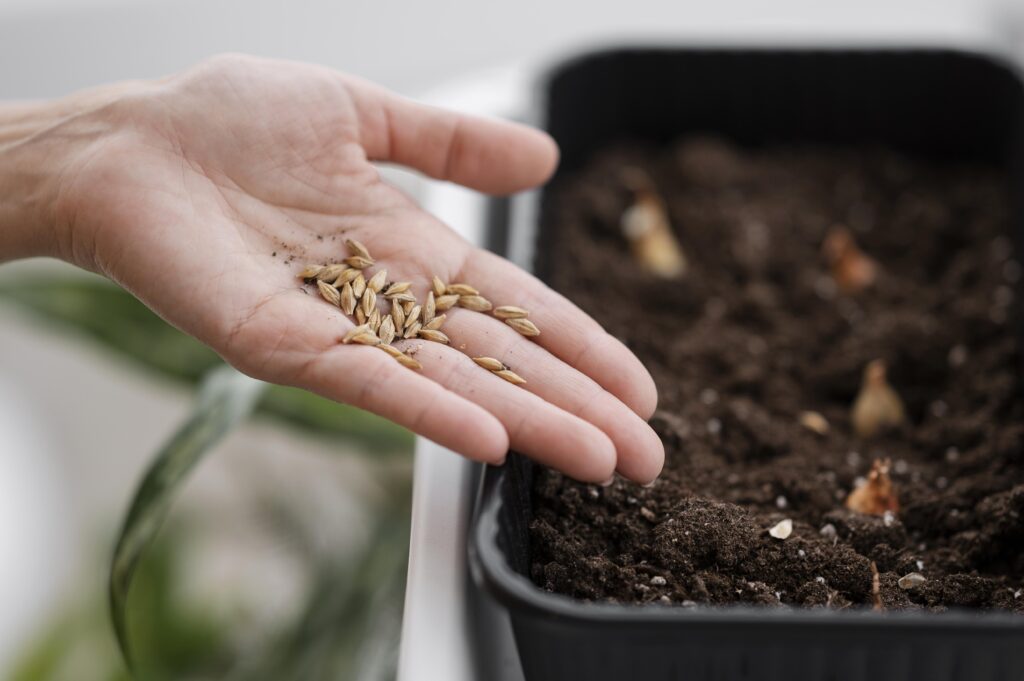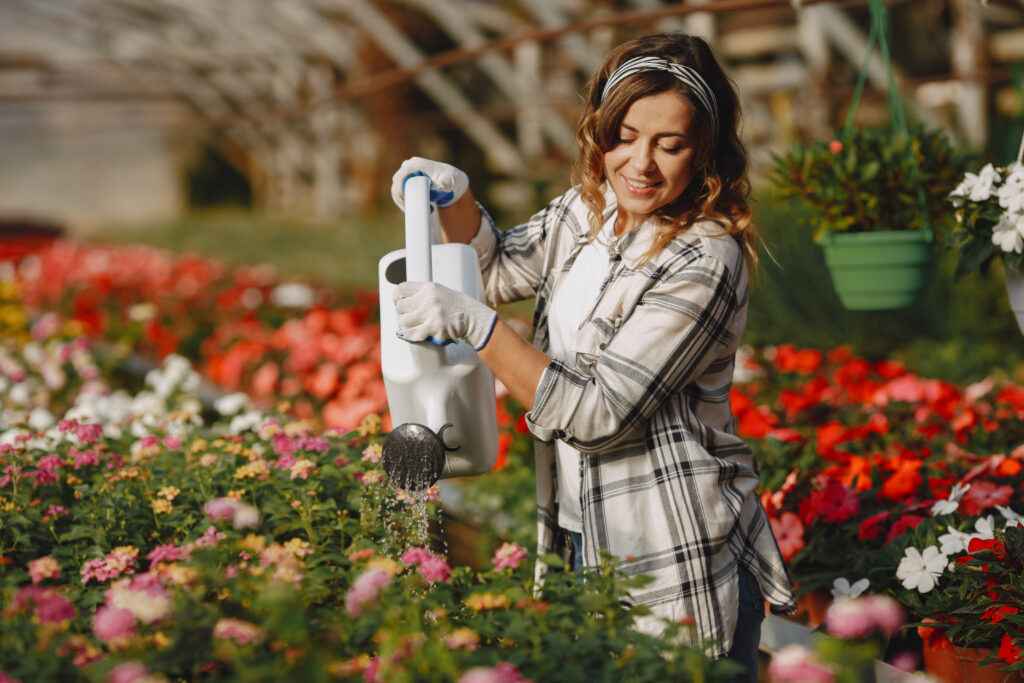
How to Plant Wildflower Seeds
Wildflower Seed Mixes
What is a Wildflower Seed Mix?
Have you ever dreamed of having a garden that bursts with color and attracts butterflies, bees, and birds? A wildflower seed mix might be just what you need. These mixes contain a variety of seeds from different wildflower species, carefully chosen to grow well together and create a beautiful, natural-looking garden.
Importance of Wildflower Seed Mixes
Wildflower seed mixes aren’t just about adding beauty to your garden—they play a vital role in supporting local ecosystems. They provide food and habitat for pollinators, enhance biodiversity, and can even improve soil health. Plus, they offer a low-maintenance gardening option for busy people.
Table of Contents

Benefits of Planting a Wildflower Seed Mix
1. Ecological Benefits:
Planting a wildflower seed mix is like giving Mother Nature a helping hand. They attract pollinators like bees and butterflies, which are crucial for the reproduction of many plants, including our food crops. Wildflowers also support various wildlife, from birds to beneficial insects, creating a thriving ecosystem in your backyard.
2. Aesthetic Appeal:
A wildflower seed mix creates a feast for the eyes. With a mix of colors, shapes, and sizes, they offer a stunning display that changes with the seasons. Unlike manicured gardens, wildflower gardens have a natural, unstructured beauty that can make any space feel more welcoming and vibrant.
3.Low Maintenance Gardening:
If you love gardening but hate the upkeep, a wildflower seed mix is perfect. Once established, wildflowers require minimal watering and care. They are generally more drought-tolerant and pest-resistant than many traditional garden plants, making them a great choice for low-maintenance gardening.
Types of Wildflower Seed Mixes
Wildflower seed mixes come in various types, including annuals, perennials, regional blends, and specialty mixes, each tailored to suit different gardening needs and climates.

1. Annuals vs. Perennials:
Annual wildflowers, like poppies and cornflowers, complete their life cycle in one year. They provide a burst of color quickly but need to be replanted each year. Perennials, such as coneflowers and black-eyed Susans, take longer to establish but come back year after year, offering a more sustainable option in a wildflower seed mix.
2. Regional Mixes :
These wildflower seed mixes are tailored to thrive in specific climates and regions. For example, a mix designed for the Midwest will include species that are well-suited to that area’s soil, climate, and wildlife.


3.Specialty Mixes:
Specialty wildflower seed mixes are created for specific purposes, like attracting pollinators or providing erosion control. They often include a blend of both annual and perennial flowers to offer immediate color and long-term benefits.
Choosing the Right Wildflower Seed Mix
Selecting the right seed mix involves considering your climate, soil type, and sunlight conditions to ensure the best growth and vibrant blooms.
- Understanding Your Climate: Different wildflower seed mixes thrive in different climates. Research the typical weather patterns in your area and choose a mix that will flourish in those conditions.
- Soil Considerations: Wildflowers aren’t typically picky about soil, but some species do better in certain types. Conduct a soil test to understand your soil’s pH and nutrient levels, then select a wildflower seed mix that matches those conditions.
- Sunlight and Shade Requirements: Some wildflowers need full sun, while others thrive in partial shade. Check the sunlight requirements for the species in your chosen wildflower seed mix and plant them in a suitable spot to ensure healthy growth.
Preparing the Soil for Planting
Now, prepare your soil properly to give your wildflower seeds the best start..
1. Soil Testing:
Before you plant, test your soil to determine its pH and nutrient content. This will help you amend the soil properly to give your wildflower seed mix the best start.


2. Soil Preparation Techniques :
Remove any existing vegetation and loosen the soil to a depth of about six inches. This will help the seeds establish strong roots. You may also need to add compost or other organic matter to improve soil structure and fertility for your wildflower seed mix.
3.Adding Organic Matter :
Incorporate compost, well-rotted manure, or other organic materials into the soil. This not only enriches the soil but also helps retain moisture, which is crucial for seed germination and growth in your wildflower seed mix.

Planting Your Wildflower Seed Mix
Planting your wildflower seed mix involves choosing the right time, sowing techniques, and proper watering to ensure vibrant blooms and a thriving garden.
1. Best Time to Plant:
The optimal time to plant a wildflower seed is typically in the spring or fall. Fall planting allows seeds to undergo natural stratification, which can enhance germination rates in the spring


2. Sowing Techniques:
Scatter the seeds evenly over the prepared soil, then lightly rake them in to ensure good seed-to-soil contact. Avoid burying the seeds too deeply, as many wildflowers need light to germinate.
3. Watering Guidelines :
Water the area gently but thoroughly after planting. Keep the soil consistently moist until the seedlings are well-established, then reduce watering frequency for your wildflower seed.

Common Problems and Solutions
Address common wildflower gardening issues with these practical solutions
- Pests and Diseases: Wildflowers are relatively pest-resistant, but occasional issues can arise. Natural predators and organic treatments usually manage pests effectively. Diseases are rare but can be treated with appropriate organic fungicides.
- Poor Germination: If your wildflower seed mix isn’t germinating well, it could be due to poor soil contact, incorrect planting depth, or insufficient watering. Adjusting these factors can improve germination rates.
- Invasive Species: Watch out for invasive species that can take over your garden. Choose wildflower seed mixes that exclude known invasive plants and monitor your garden regularly to catch and remove any unwanted intruders.a suitable spot to ensure healthy growth.
Seasonal Care Tips
Seasonal care tips ensure your home stays comfortable year-round.
1. Spring:
Before you plant, test your soil to determine its pH and nutrient Spring is the time for new growth. Ensure your wildflowers are well-watered and free from early-season weeds. This is also a good time to sow additional seeds if needed in your wildflower seed mix


2. Summer :
Summer care involves regular watering, especially during dry spells. Deadheading spent flowers can encourage more blooms and keep the garden looking tidy..

Wildflower Seed Mixes for Pollinators
1. Attracting Bees:
Bees love flowers like clover, lavender, and sunflowers. Choose a wildflower seed mix that includes these to support bee populations.
2. Attracting Butterflies:
Butterflies are drawn to flowers such as milkweed, coneflower, and zinnias. A wildflower seed mix with these flowers will provide nectar and breeding sites.
3.Attracting Other Beneficial Insects
Incorporate flowers like yarrow, dill, and fennel in your wildflower seed mix to attract predatory insects that help control garden pests.
Wildflower Seed Mixes for Specific Uses
- Erosion Control: Wildflowers like blue flax and ryegrass have deep roots that help stabilise soil, making them ideal for erosion control.
- Enhancing Meadows and Fields: Transform an ordinary field into a vibrant meadow with a wildflower seed mix of tall and short wildflowers. This not only looks beautiful but also supports local wildlife.
- Roadside Plantings: A wildflower seed mix is perfect for roadside planting, offering low-maintenance beauty that can withstand the harsh conditions often found along roadsides.
Success Stories and Inspiration
Personal Anecdotes: One gardener turned a barren patch into a buzzing, blooming paradise simply by scattering a wildflower seed mix. Her garden is now a favourite spot for local wildlife.
Community Projects: Many communities have embraced wildflower planting projects to beautify public spaces and support local ecosystems. These initiatives often bring people together and enhance community pride.
Famous Wildflower Gardens: Visit renowned wildflower gardens like those at Lady Bird Johnson Wildflower Center in Texas or Mount Cuba Center in Delaware for inspiration and ideas for your own wildflower seed mix garden.
Conclusion
Recap of Benefits: Planting a wildflower seed mix is a simple, effective way to enhance the beauty and biodiversity of your garden. These mixes support local ecosystems, provide low-maintenance gardening options, and offer year-round interest.
Encouragement to Start Planting: Whether you have a small backyard or a large field, there’s a wildflower seed mix that’s perfect for you. Start small, experiment, and watch your garden transform into a vibrant, lively space.
Final Thoughts: Wildflowers bring a touch of nature’s wild beauty to our controlled gardens. They remind us of the importance of biodiversity and the joy of watching nature thrive.
“Discover More: Enhance Your Garden with Bee-Friendly Tips!”







